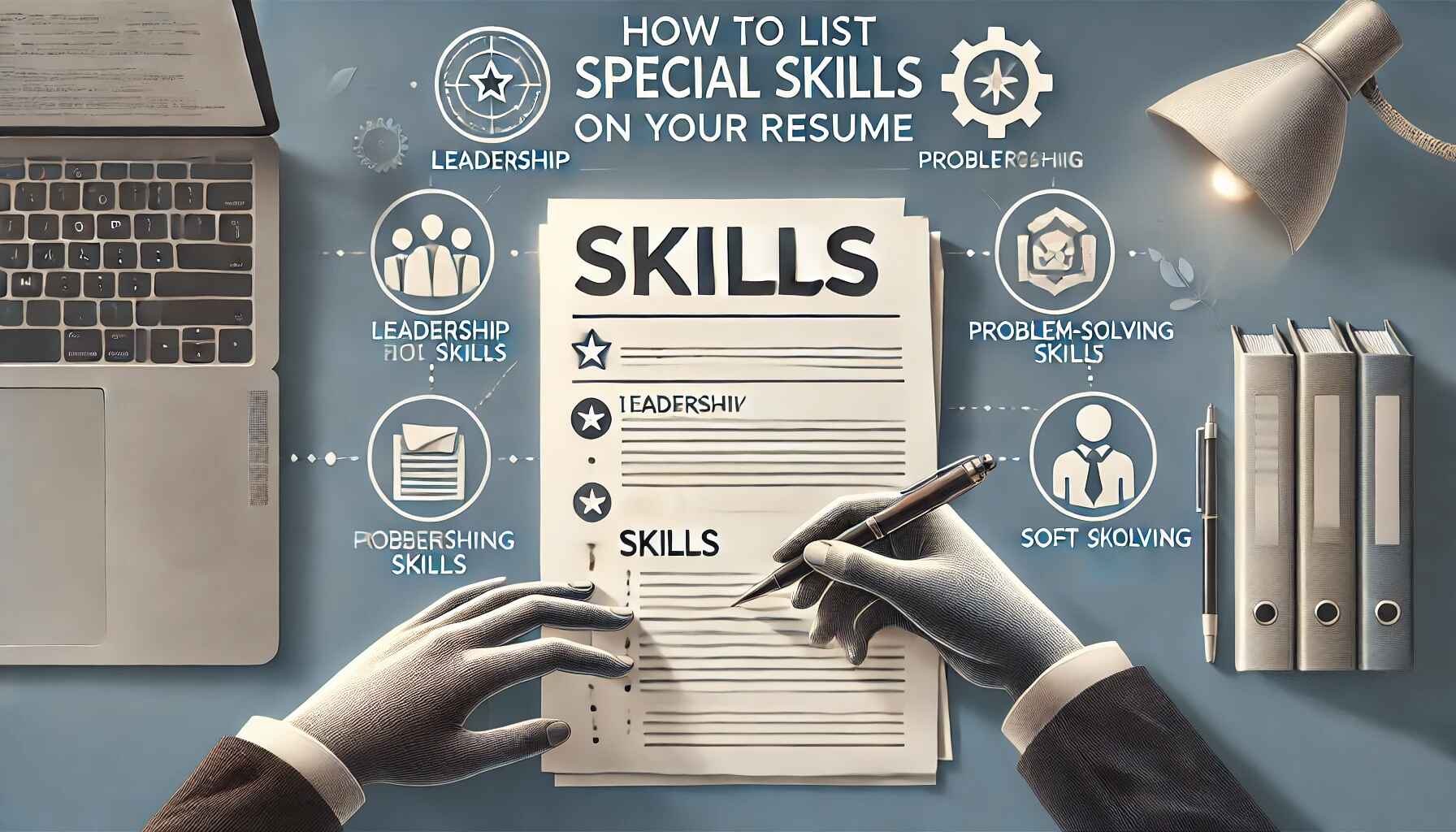How to List Special Skills on Your Resume
When it comes to standing out in today’s competitive job market, knowing how to effectively showcase your special skills on your resume is crucial. This article will guide you step by step through the process of identifying, organizing, and presenting your unique abilities to impress employers and land your dream job.
What Are Special Skills?
Special skills are the unique abilities and competencies that make you a valuable candidate for a job. These skills can be classified into two categories: hard skills, such as data analysis or programming, and soft skills, like teamwork or adaptability.
Types of Special Skills
1. Hard Skills:
Technical knowledge (e.g., coding, accounting)
Industry certifications (e.g., PMP, AWS Certified Solutions Architect)
Specialized tools and software expertise (e.g., Adobe Suite, Microsoft Excel)
2. Soft Skills:
Effective communication
Leadership and team management
Critical thinking and problem-solving
How to Identify Your Special Skills
Start by conducting a self-assessment:
Reflect on past experiences: What tasks have you excelled at?
Ask for feedback: Colleagues and mentors can provide insights into your strengths.
Leverage skill assessment tools: Online tools like LinkedIn Skills Assessments can help pinpoint your capabilities.
Why Employers Value Special Skills
Employers prioritize candidates who can bring immediate value to their organization. For example:
Technical skills ensure tasks are completed efficiently.
Interpersonal skills foster a positive and collaborative work environment.
Where to Include Special Skills
Skills Section: A dedicated section highlighting your top competencies.
Experience Section: Show how you've applied skills in previous roles.
Cover Letter: Tie your skills directly to the job requirements.
Customizing Skills for the Job
Tailor your resume to match the job description. For instance:
Highlight relevant keywords from the job posting.
Focus on skills directly related to the position.
Avoiding Common Mistakes
Avoid these pitfalls:
Listing too many skills without context.
Including outdated or irrelevant abilities.
Misrepresenting your expertise.
How to Describe Your Skills
Use action verbs and quantify your achievements:
Instead of saying “Proficient in Excel,” write, “Developed automated spreadsheets reducing reporting time by 30%.”
Examples of Skill-Based Resumes
Explore templates that emphasize skills, such as:
Functional resumes focusing on abilities over job history.
Combination resumes blending skills and experience.
ATS-Friendly Skills
To ensure your resume passes through Applicant Tracking Systems:
Use standard formatting and avoid images.
Incorporate keywords naturally.
Updating Your Skills Section
Keep your resume fresh by:
Adding new skills from recent training or certifications.
Removing outdated competencies.
FAQs
1. What special skills should I include if I’m entry-level?
Focus on transferable skills like communication, organization, and basic technical knowledge.
2. Should I list skills I’m still learning?
Yes, if you’re actively developing them and they’re relevant to the job.
3. How many skills should I include?
Include 5-10 of the most relevant skills.
4. Do I need to separate hard and soft skills?
Not necessarily, but grouping them can improve clarity.
5. Can hobbies be considered skills?
Only if they’re relevant to the job.
6. Should I mention skills in my LinkedIn profile?
Absolutely, as it complements your resume.
Conclusion
By effectively identifying and showcasing your special skills, you can significantly boost your chances of landing your ideal job. Remember, a well-crafted resume is your ticket to standing out in the crowd. Good luck!









